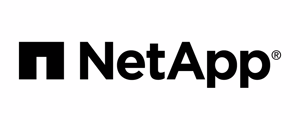Hybrid cloud is here to stay.
According to the recent Global Hybrid Cloud Trends Report, an impressive 82% of IT leaders say that they’ve already adopted the hybrid cloud. In addition, almost half (47%) are deploying two to three public IaaS (infrastructure as a service) clouds.
And those who only use a single public cloud? A mere 8% of organisations still have their feet on just one cloud.
A quick recap on hybrid cloud.
TechTarget defines hybrid cloud as: “…a cloud computing environment that uses a mix of on-premises, private cloud and third-party, public cloud services with orchestration between these platforms. This typically involves a connection from an on-premises data centre to a public cloud. The connection also can involve other private assets, including edge devices or other clouds.”
A typical hybrid cloud will combine CSP (cloud service provider) and HCP (hyperscale cloud provider) public and private – usually an on-premises data centre – infrastructure environments. However, there’s no hard and fast configuration rule.
The burning question, of course, is why go hybrid to start with?
Answer: Flexibility, cost control, agility, scalability, resilience, and compliance. When you choose a hybrid cloud model, you can deploy workloads in your private IT environment or public clouds. You can move between them as your computing needs change and depending on whichever environment is most cost-effective at the time.
What’s on the other side of the hybrid cloud silver lining?
While there are clear business advantages (see above), there are some catches to hybrid cloud adoption.
For example, it can be tricky to implement, and there can be security concerns around the misuse of the hybrid cloud when contracted by third-party vendors. In addition, it can be difficult to maintain visibility of your data, applications, systems and process, and sometimes, opting for a hybrid cloud can be far more expensive than sticking with a public cloud model due to the money and resources needed to maintain and manage the on-premises hardware and private cloud components.
And then, there’s hybrid cloud data management.
The dark side of data management.
Sadly, data management is a sticking point for many when it comes to a hybrid cloud environment. It’s certainly an added complication when you’re trying to streamline and save on costs – and do better business.
Unlike the simplicity you enjoy when you store all of your data in a single public cloud or a private data centre, moving data around a distributed infrastructure is considerably more challenging. And you end up with cost, performance, security, and data redundancy issues.
Drilling down a little:
- Costs escalate every time you move data out of your public cloud (you pay an egress fee). And the more data you move out, the more you pay.
- Performance is an obvious casualty due to the speed of transferring data between data centres over the internet – and how geographically dispersed those data centres are (i.e., latency).
- The spread of data across a hybrid environment impacts security. This spread can make it more difficult to track where your data lives and what the access rules to it are. And proprietary vendor data encryption – for both at-rest and in-flight becomes an essential consideration as this, too, has a knock-on effect on performance and availability.
- Keeping copies of redundant data so you can access it more quickly and easily is a great idea, but it’s harder to configure availability when you’re using a hybrid cloud environment.
What’s the best way to manage your data in a hybrid cloud environment?
There are numerous practical strategies to minimise and optimise each of the data management issues – from controlling the frequency of moving data from A to B to compressing it to reduce the size of the data being moved, applying centralised data access policies on a single platform to meet security and compliance goals, and more. Each strategy is sound, but managing them independently of one another or using a variety of tools adds to the TCO of your hybrid cloud.
That’s where data management software like NetApp ONTAP comes into its own – without compromising business priorities. With ONTAP, you can create a future-proofed storage infrastructure for your on-premises and cloud resources – reducing risk, saving time, and, critically – optimising your cloud budget as you seamlessly move your data to where it needs to be. And as it automates day-to-day tasks, the burden on your IT staff is reduced – so everyone’s a winner.
Earlier, we mentioned proprietary vendor data encryption – and the risk of being locked into someone else’s technology when you want to retrieve your data and use it elsewhere. With ONTAP, secondary data is stored in native format, so it’s always available through standard network storage protocols such as NFS, SMB/CIFS, Amazon Simple Storage Service (Amazon S3), and block storage.
Where to from here?
Yes, a hybrid cloud environment offers significant business advantages. However, the big BUT here is that they’re not perfect or without complexity, and challenges, and for the unwary, they are subject to budget blowouts.
A data management solution offers a simple, effective way to unite your hybrid cloud, control your costs, and put your data where it belongs – in your hands.
Amidata can not only help you adopt a hybrid cloud strategy, but with NetApp and our own cloud storage solutions, we can eliminate extra egress charges between on-premises and public cloud infrastructures. So, you’ll not only save money, but enjoy consistent, disruption-free performance when migrating data.
In partnership with NetApp.




